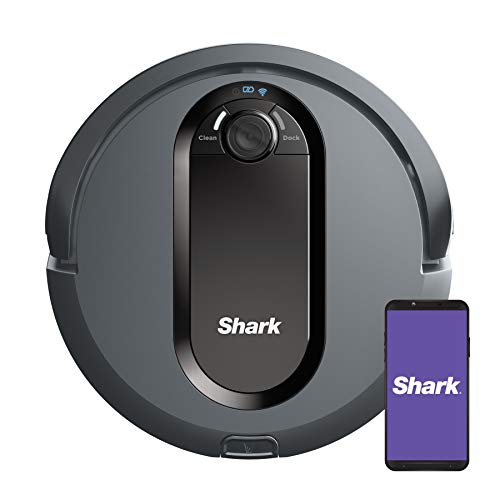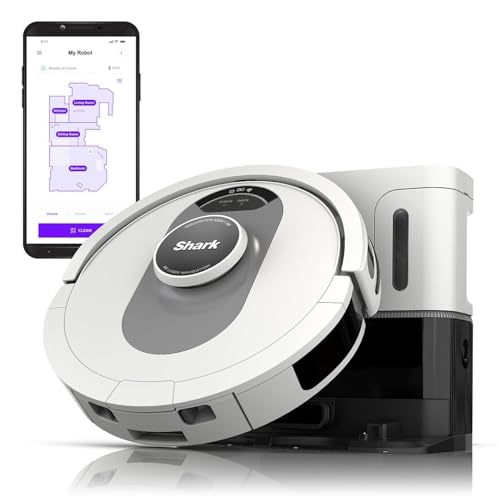12 Companies Setting The Standard In Robot Vacuum And Mop
How to Maintain a Robot Vacuum and Mop
 A robot vacuum and mop can assist you in keeping your floors on a regular schedule. Set it to run on a set schedule and you’ll return home to clean floors without any effort from you.
A robot vacuum and mop can assist you in keeping your floors on a regular schedule. Set it to run on a set schedule and you’ll return home to clean floors without any effort from you.
Apps can be used to control and schedule most robot vacuums that have mopping capabilities. Some robot vacuums have self-emptying bins and many utilize a microfibre pad which can be washed as needed.
1. Simple to use
Robot vacuums and mops are designed to be simple to use and maintain. However it is important to realize that they cannot clean everything for you. You’ll need to do some manual cleaning from time to time. Additionally, you might need to replace components such as filters or wheels. To get the best hardwood floor robot vacuum and mop results, adhere to the maintenance schedule recommended by the manufacturer.
When you first receive your robot, it will have to determine the location of your home. This can take a few weeks. During this process, it may hit objects or hit walls. You can prevent this from happening by setting “no-go zones” using the app. Once your robot is identified, you can also adjust settings such as mopping power and suction power by using the app.
The app will also tell you when your components need to be cleaned or replaced. This will ensure that your robot is running smoothly and efficiently for years. Some accessories will wear faster than others depending on how often they’re used. For instance the brushes on a robot vacuum should be replaced about every six months. To increase the airflow, the dust filter of a robot vacuum has to be cleaned once a week. This can be accomplished by taking the filter off and tapping it on an un-porous surface to eliminate any debris that is loose. Rinse the filter with cold water until it’s clean. Let it dry before inserting it back into.
Before disassembling your robot, it’s recommended to refer to the user manual for specific instructions on how to clean and troubleshoot. You will only need just a few items: a trashcan an microfiber towel and a toothbrush (an old toothbrush is ideal) and a pair of scissors. It’s a good idea schedule a weekend once a month to perform these tasks to ensure optimal performance. Also, ensure that you wash your hands with warm water and soap to disinfect them after handling any dirty parts. This will prevent the risk of injury and contamination to yourself or your robot.
2. All types of floors are suitable for use.
The top robot mops are able to be used on hard and tiled floors. Some come with a choice of disposable or reused mop pads that are able to be used wet or dry. Machine washing is typically required to keep the pads clean and fresh. Some robot mops are equipped with reservoirs of water that can be filled up with your favorite cleaning solution, whereas others use cleaners made by the brand. They also have a variety of settings that you can choose from for both sweeping and mopping.
While most robot mops can get under low furniture and along edges, they may struggle with cluttered spaces and sometimes get stuck on small objects. It is essential to straighten out the space prior to beginning your cleaning session. You’ll need to be home when the mops are done to recharge or empty their water tank.
Most robot vacuum and mop manufacturers offer a cleaning map that can aid you in planning your space. You can mark rooms and areas that you don’t want the robots to clean. This will tell it to stay clear of. Apps for most robot mop models let you block carpeted areas.
If you have carpets and hard flooring Choose a robot that can mop and vacuum at the same. In our home test of the Yeedi robot mop and vacuum it was impressed by the ease with which it moved around the pre-mapped area, adjusting for obstacles without ignoring any spots. It also had a broad range of mopping options and was able to work on hardwoods, ceramic tiles and carpeted stairs. The robot was easy to setup and sync, and it left no traces of wet floor behind. However, it did have a difficult time with an area rug. It was forced to backtrack, and ended up under it, but then escaped without assistance.
The iRobot Combo j7+ is our top-rated robot mops and another great choice for busy homes with many surfaces. It’s also the first 2-in-1 with a fully retracting pad that can lift it off carpets and rugs to prevent mess. It also comes with thoughtful iRobot OS 5.0 updates that add personalization and intelligence.
 3. Easy to empty
3. Easy to empty
Whether you have a robot vacuum or a mop you’ll need it to be easy to empty and maintain. You’ll have to handle other chores in order to keep the robot in operation. A lot of robots have an automatic emptying bin to allow you to easily get rid of the contents. It may seem like an insignificant convenience, but can make a huge impact on your experience.
The filter on a robot cleaner is another important feature. It traps dirt and dust. This will ensure that your floors are as spotless as possible and robotic mop and vacuum prevent dust from recirculating into the air. It’s Best Self Cleaning Robot Vacuum And Mop to look for models that have an HEPA filter, which will trap the smallest particles and leave your home with a clean atmosphere.
Some models come with a water tank that can be reused and a mop, so you don’t need to buy disposable cleaning products. This will decrease household waste and help you save money in the long term.
When deciding on a robot cleaner for your home, you should consider the size of the home and the space available for the base and dust bin. The more space you have, you will need to move the machine less frequently.
It’s recommended to read reviews of the model you’re thinking of buying before purchasing it. This will provide you with an idea of how reliable the model is and what sort of issues it is prone to. It is also important to determine whether it has a remote or an app that could be useful to track progress and schedules.
The advantages of a robotic cleaner are well worth the cost, particularly when you consider that they are completely hands-free. You can save lots of time if you’re a busy parent trying to balance work, kids and other tasks. Make sure you be aware of the battery and check if it has a low-charge indicator before you purchase.
4. Easy to maintain
Depending on the model you have, cleaning the filter or dust bin could be a straightforward process and taking the main brush off and washing it may be more complicated. It is also crucial to clean the sensors on the robot, particularly the ones that help it navigate and avoid obstacles within your home. It is recommended that you remove the sensors and clean them with a clean microfiber cloth every so often or use a mild cleaner that is safe for this type of equipment.
The main sensor on robot vacuums is responsible for funneling dirt into its dustbin however, it can also get stuck in hair and other debris. Fortunately, most models have this feature that can be removed for easy cleaning. A few minutes of rubbing it with a microfiber cloth can make the difference between it functioning as intended and not working at all.
It is also crucial to wash and dry regularly the mopping pads or pads. This will prevent bacteria from growing in the damp cloths or pads which could make your floors smell and reduce their effectiveness. Many manufacturers suggest rinsing the mopping pads or cloths with warm water and allowing them to dry in the air before using them again.
Other parts that need to be regularly cleaned include the front bumper of the robot, that helps steer free of obstructions and walls, and its wheels, which may collect dirt, dust and hair over time. This can prevent the bot from moving freely. These parts can be cleaned gently using a microfiber cloth but not too wet. You can also use a toothbrush or soft-bristled brush to access difficult-to-reach places.
The camera on the robot is a different piece of equipment that is easy to clean. It is present on the majority of models and is responsible for taking photos of your room. This is usually used to map and create schedules and no-mop zones. You can wipe the camera using a dry, clean microfiber cloth or a dampened sponge made of melamine. Make sure you read the manual for the correct instructions.